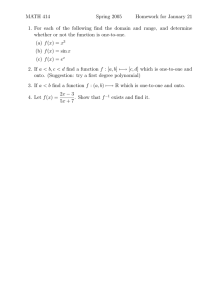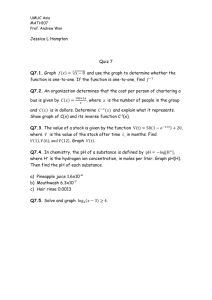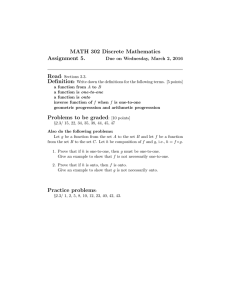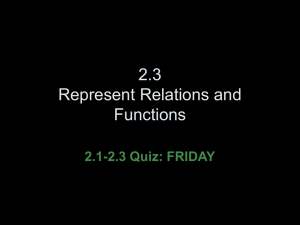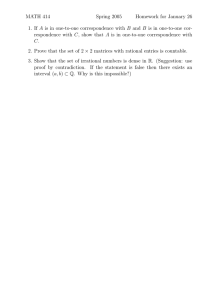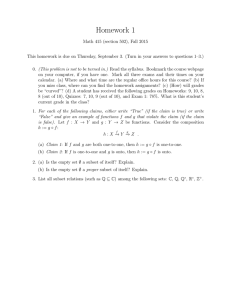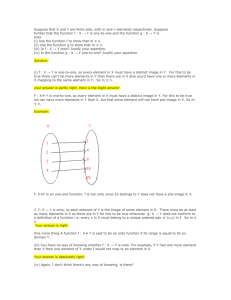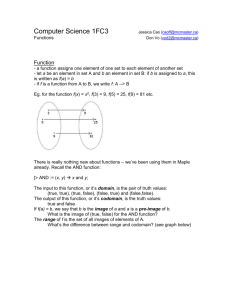Quiz #3 Solutions
advertisement
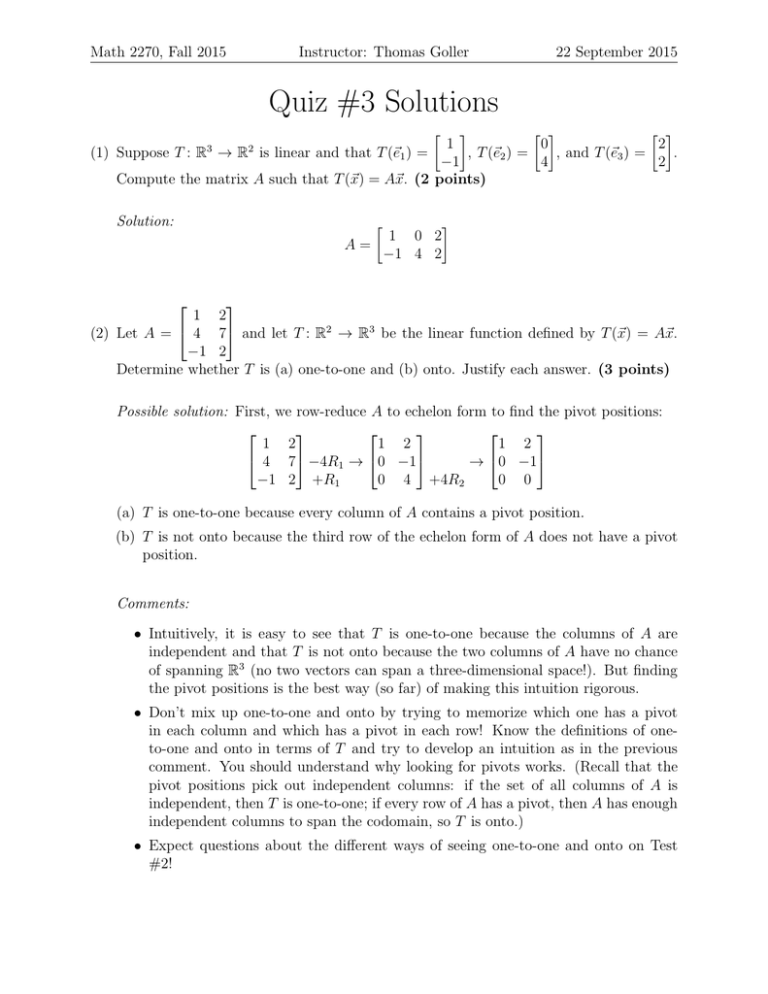
Math 2270, Fall 2015 Instructor: Thomas Goller 22 September 2015 Quiz #3 Solutions 1 0 2 (1) Suppose T : R ! R is linear and that T (~e1 ) = , T (~e2 ) = , and T (~e3 ) = . 1 4 2 Compute the matrix A such that T (~x) = A~x. (2 points) 3 2 Solution: A= 1 0 2 1 4 2 2 3 1 2 (2) Let A = 4 4 75 and let T : R2 ! R3 be the linear function defined by T (~x) = A~x. 1 2 Determine whether T is (a) one-to-one and (b) onto. Justify each answer. (3 points) Possible solution: First, we row-reduce A to echelon form to find the pivot positions: 2 3 2 3 2 3 1 2 1 2 1 2 4 4 75 4R1 ! 40 15 15 ! 40 1 2 +R1 0 4 +4R2 0 0 (a) T is one-to-one because every column of A contains a pivot position. (b) T is not onto because the third row of the echelon form of A does not have a pivot position. Comments: • Intuitively, it is easy to see that T is one-to-one because the columns of A are independent and that T is not onto because the two columns of A have no chance of spanning R3 (no two vectors can span a three-dimensional space!). But finding the pivot positions is the best way (so far) of making this intuition rigorous. • Don’t mix up one-to-one and onto by trying to memorize which one has a pivot in each column and which has a pivot in each row! Know the definitions of oneto-one and onto in terms of T and try to develop an intuition as in the previous comment. You should understand why looking for pivots works. (Recall that the pivot positions pick out independent columns: if the set of all columns of A is independent, then T is one-to-one; if every row of A has a pivot, then A has enough independent columns to span the codomain, so T is onto.) • Expect questions about the di↵erent ways of seeing one-to-one and onto on Test #2! Math 2270, Fall 2015 Instructor: Thomas Goller 2 3 0 2 4 0 35 using any method. (2 points) 7 0 1 2 3 (3) Compute the matrix product 4 2 1 Solution: 22 September 2015 2 6 12 4 17 8 12 4 3 0 35 2 (4) Bonus problem: Let T : R3 ! R3 be a linear transformation defined by T (~x) = A~x for a 3 ⇥ 3 matrix A. One possible reduced echelon form of A is 2 3 1 ⇤ 0 40 0 15 T is not one-to-one; T is not onto. 0 0 0 Compute the other seven possible reduced echelon forms of A (using ⇤ to denote entries that could be any real number). In each case, state whether T is one-to-one and whether T is onto. (1 bonus point) Solution: 2 0 0 40 0 0 0 The other seven possible reduced echelon forms of A are 3 2 3 2 3 2 3 2 3 2 3 2 3 0 0 0 1 0 1 ⇤ 1 ⇤ ⇤ 0 1 0 1 0 ⇤ 1 0 0 05 , 40 0 05 , 40 0 05 , 40 0 05 , 40 0 15 , 40 1 ⇤5 , 40 1 05 0 0 0 0 0 0 0 0 0 0 0 0 0 0 0 0 0 0 1 T is one-to-one and onto only in the last case and is not one-to-one and not onto in the first six cases. Comments: One-to-one and onto are equivalent in the special case when the domain and codomain of T are the same (when the matrix for T is square). We will talk about this in Sections 2.2 and 2.3.
